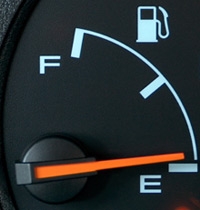Your mileage may vary from the published estimates, as all drivers know.
But it turns out it may vary more in Canada, whose fuel-efficiency ratings are higher than those from the U.S. Environmental Protection Agency for an identical car.
That's because the Canadian authorities use a two-cycle test--for city and highway ratings--that's identical to the one used by the EPA before 2008.
Those tests were designed in the 1970s, and are now quite outdated, with top speeds of 60 mph and very slow acceleration from 0 to 50 mph that takes more 1 minute.
Neither heating nor air conditioning is used at all, and only two wheels are used to propel the vehicle even if it has all-wheel drive.

Canadian Parliament
As explained in a nicely informative article on the MyCarma company blog, the EPA added three more cycles to its tests starting that year.
As well as the city and highway cycles, it now has a higher-speed test, an air-conditioning test, and a heater test.
To compensate for the overly high numbers returned on the tests, both Canadian and U.S. agencies apply "adjustment factors" to bring ratings more in line with reality.
Typically those are 10 to 15 percent for Canada, and 15 to 20 percent in the U.S.
So in Canada, they're using less strenuous tests and lowering them less than in the U.S.

Canada set to make its own fuel-economy standard
Change is afoot, however.
Two years ago, CBC News looked at the differences and found that Canadian gas-mileage ratings were 16 to 22 percent higher than U.S. ratings for the same cars.
So Canadian buyers looking for gas-mileage ratings may want to scan the U.S. EPA's fuel-efficiency figures as well as their own.
Two years ago, the Automobile Protection Association in Canada called on its government to revise the ratings. One alternative: Adopt the EPA's revised procedures and adjustment factors.
In its 2013 Fuel Consumption Guide, Natural Resources Canada said it plans to change Canada's testing procedures--but that the change may not be completed until 2015.
Some carmakers have already started to report five-cycle data, however--so the wheels of change are moving, even if slowly.
_______________________________________________












